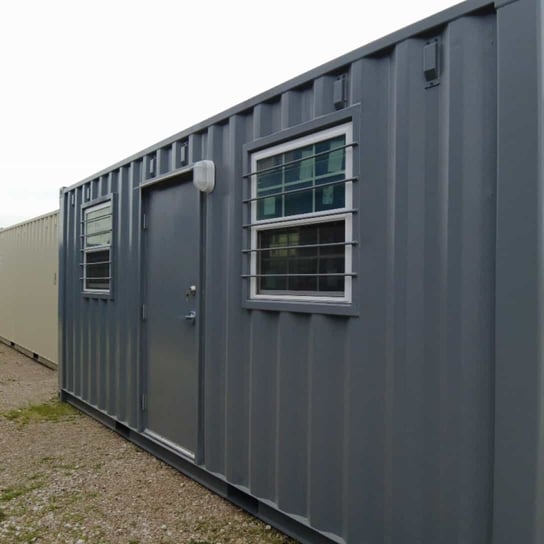Container Dimensions
Shipping container dimensions vary in length and width. Most commonly, containers are around 10-feet, 20-feet, or 40-feet long, each at around 8 feet wide. The height of each shipping container varies between standard height (8 feet 6 inches) and "high cube" (9 feet 6 inches), which are often used to increase storage space or create better air circulation. Check out the table below for a breakdown of shipping container dimensions and specifications.
(LxWxH)
(LxWxH)
(WxH)
(Empty)
All dimensions and weights are approximate as containers vary from manufacturer to manufacturer.
Learn More About Modified Shipping Containers
The Falcon team is always in the conversation about repurposing shipping containers, and we love sharing our knowledge with you! Take a look at our blog and get ready to learn!


Top 5 Modular Trends of 2025, and What They Mean for 2026
Becca Hubert | Dec 3, 2025 | 4 min read
READ MORE

5 Benefits of Shipping Container Workforce Housing for Remote Job Sites
Becca Hubert | Nov 5, 2025 | 3 min read
READ MORE

The Employer Brand You Can Walk Through
Becca Hubert | Oct 1, 2025 | 3 min read
READ MORE
Our Modified Shipping Containers
Your structures need to be secure, durable, and portable, which is why we build our wide range of portable storage, office, and housing structures using ISO 20-foot or 40-foot Conex shipping containers. We also make custom structures using 10-foot containers.

Conex Shipping Container Materials & Construction
Portable ISO shipping containers require no foundations or structural assembly. Modified shipping containers are durable, weather-resistant, and secure because they’re built with:
- 16-gauge vertically corrugated corten steel
- Double, asymmetrical steel doors with ground-level entry
- Heavy-duty, marine-grade wood flooring
- Die-stamped steel roofing
Used & One-Trip Containers
While 20-foot and 40-foot shipping containers are the norm, the age and condition of shipping containers vary. At Falcon Structures, most of the containers we modify and sell fall into the “one-trip” or “new” category. One-trip containers have made only one trip from China to the U.S. and are the best option for living and working spaces.
We also offer used shipping containers — those that have made several trips by land or sea — but we only recommend this option for limited applications. Since we always choose containers with modification in mind, we only offer containers certified as watertight and wind protected.
Why Modified Shipping Containers Create Reliable Structures
While the concept of creating durable standardized shipping containers originated in the United States, most shipping containers (also known as Conex containers, ISO containers, sea containers, ocean containers, ISBU containers, and intermodal containers) are manufactured in China or Europe.
Shipping Container Testing & Standards
To get to the United States, shipping containers travel by sea and must meet strict manufacturing standards set by the International Maritime Organization (IMO). These standards ensure any cargo stored inside is protected from harsh elements experienced at sea, including wind, rain, snow, ice, and heat.
Once modified, containers provide a safe and sturdy environment suitable for storage, industrial enclosures, living quarters, office space, military solutions, and more.

Our Catalogs
For more detailed specifications and information, take a look at the product catalogs that strike your interest.